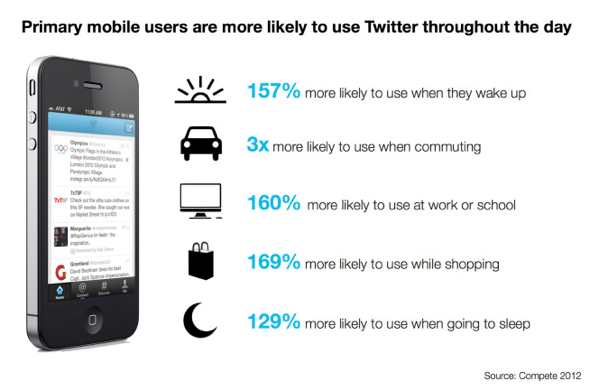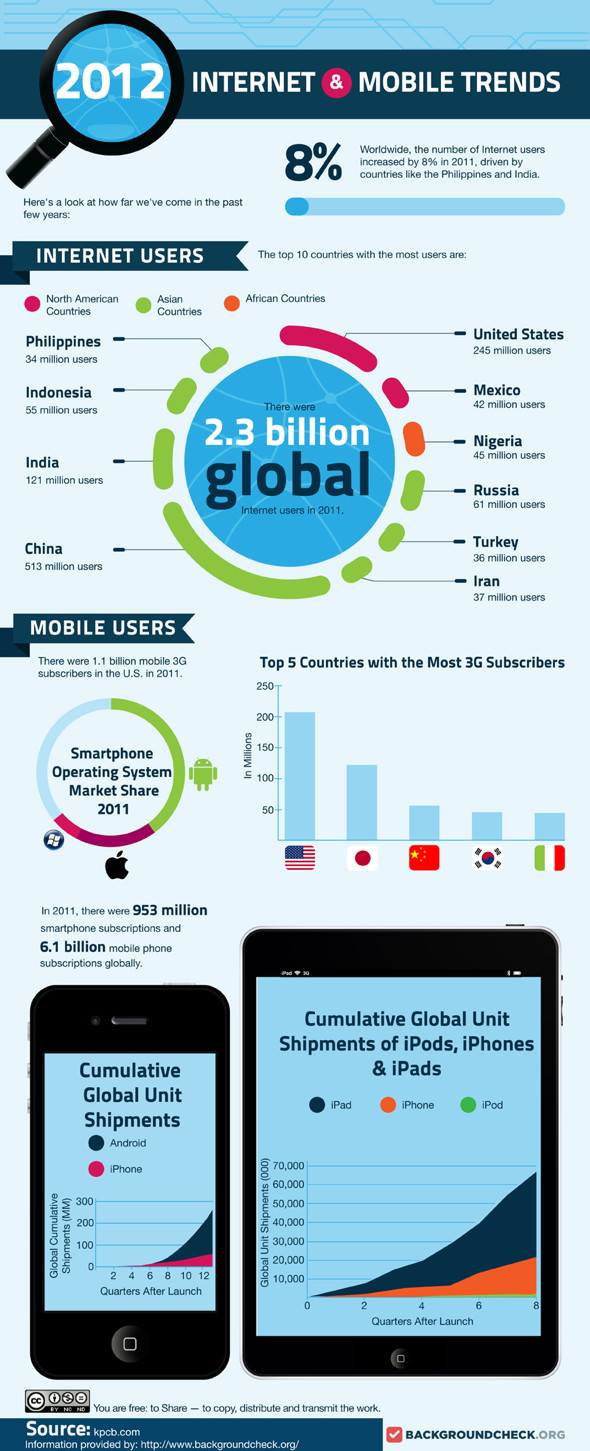In prepapration of the first dmexco Night Talks moderation in Hamburg on “Mobile: The new first screen: reach, engage, measure, monetize”, sometimes studies fly into my mailbox which are reaching me just at the right time.
InMobi released their second wave research report on Mobile Media Consumption at Mobile World Congress. It covers some on-going overview on 14 countries on how we consume mobile content these days, and it obviously underlines the rapid growth of mobile media and the benefits of mobile advertising around the globe.
From a global perspective, mobile has reached the sweet spot in media consumption. It will generate its growth in the coming year predominantly via social media, search/download apps and search activities. In the 14 countries, humans spent from 7 hour media consumption (apart from other channels)…
1. Mobile 1,8 hours
2. PC 1,6 hours
3. TV 1,5 hours
The research piece shows that 50% of the average global mobile web users primarily use their mobiles now to go online. The average mobile web person uses 6.5 apps throughout a 30-day period.
But what does this mean for marketers?
The study states that globally, 54% of users discover mobile ads via apps, 40% on a search engine, 27% on a retailer website and 23% on a video website. It also makes clear that mobile is the touchpoint for finding new products and services. 3 out of 4 say mobile advertising has opened doors to something new. Almost every second say mobile ads have influenced them to buy mobile (46%) and almost the same amout (45%) say that mobile has mobile ads have influenced their purchase decision.
When seeing mobile ads, it is not that users don’t take any actions. It is actually the other way round. Mobile ads let users downloaded an app (80%), visit the advertiser’s website (67%), visit the store/retailer/business for additional information (52%), locate an advertiser on map (45%), or even take an immediate phone call (37%).

Spot On!
While I still have some marketers from media houses and brands in my ears, saying that apps and mobile ads don’t seem to be the right marketing approach, it seems they just did not find the right content approach to their users. The mobile commerce world is growing at speed of light and innovative retailers and brands should be well-prepared for it – and ideally have at least a click-to-call solution on their mobile website. It is not surprising that in these 14 countries 80% retailers say they plan to get the right approach to mobile in 2013.
How about you? Are you prepared for the mobile sales and marketing development? What experiences do you have so far with mobile ads?
PS: If you are interested in attending the dmexco discussion in Hamburg, please book your seat here.












